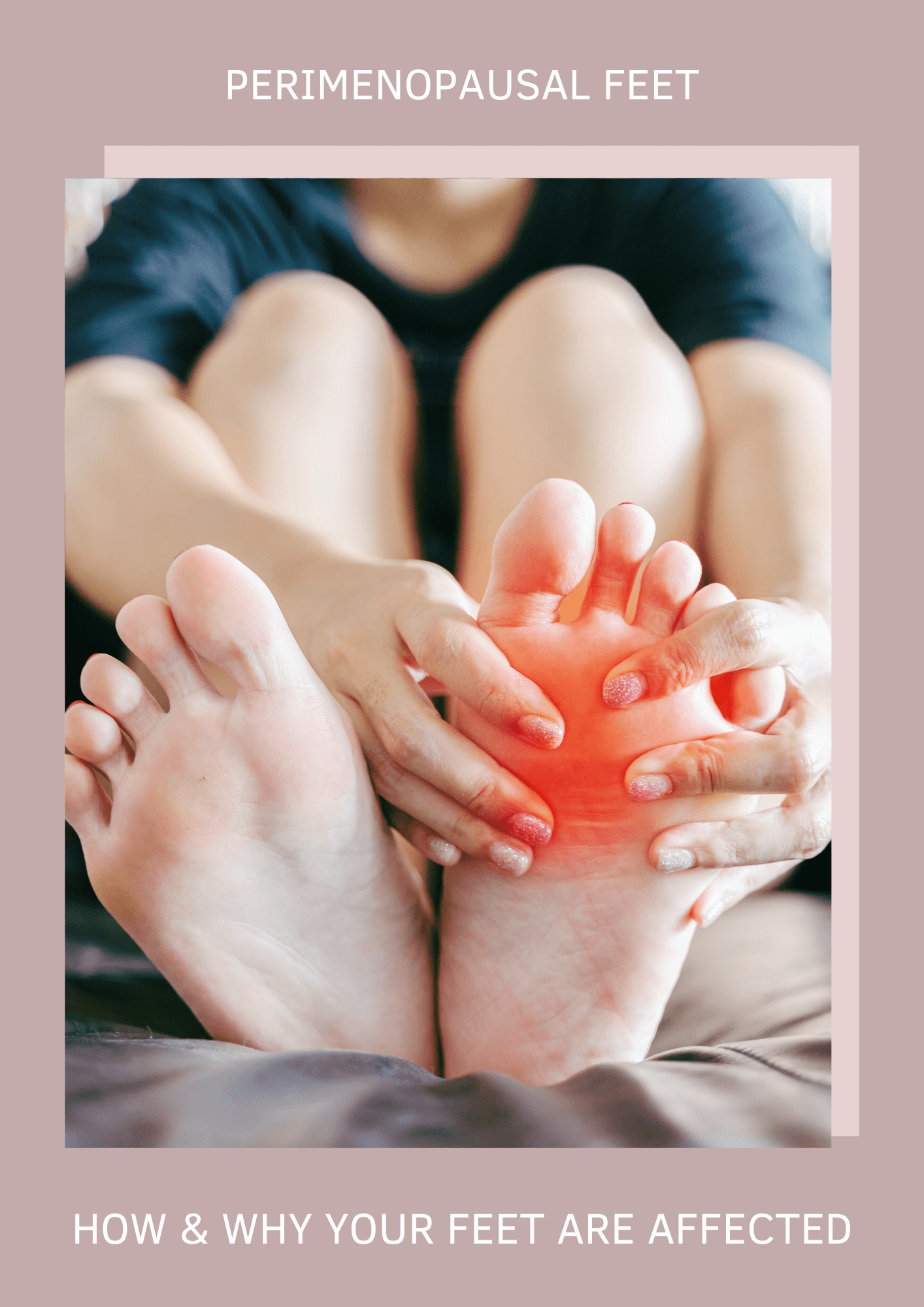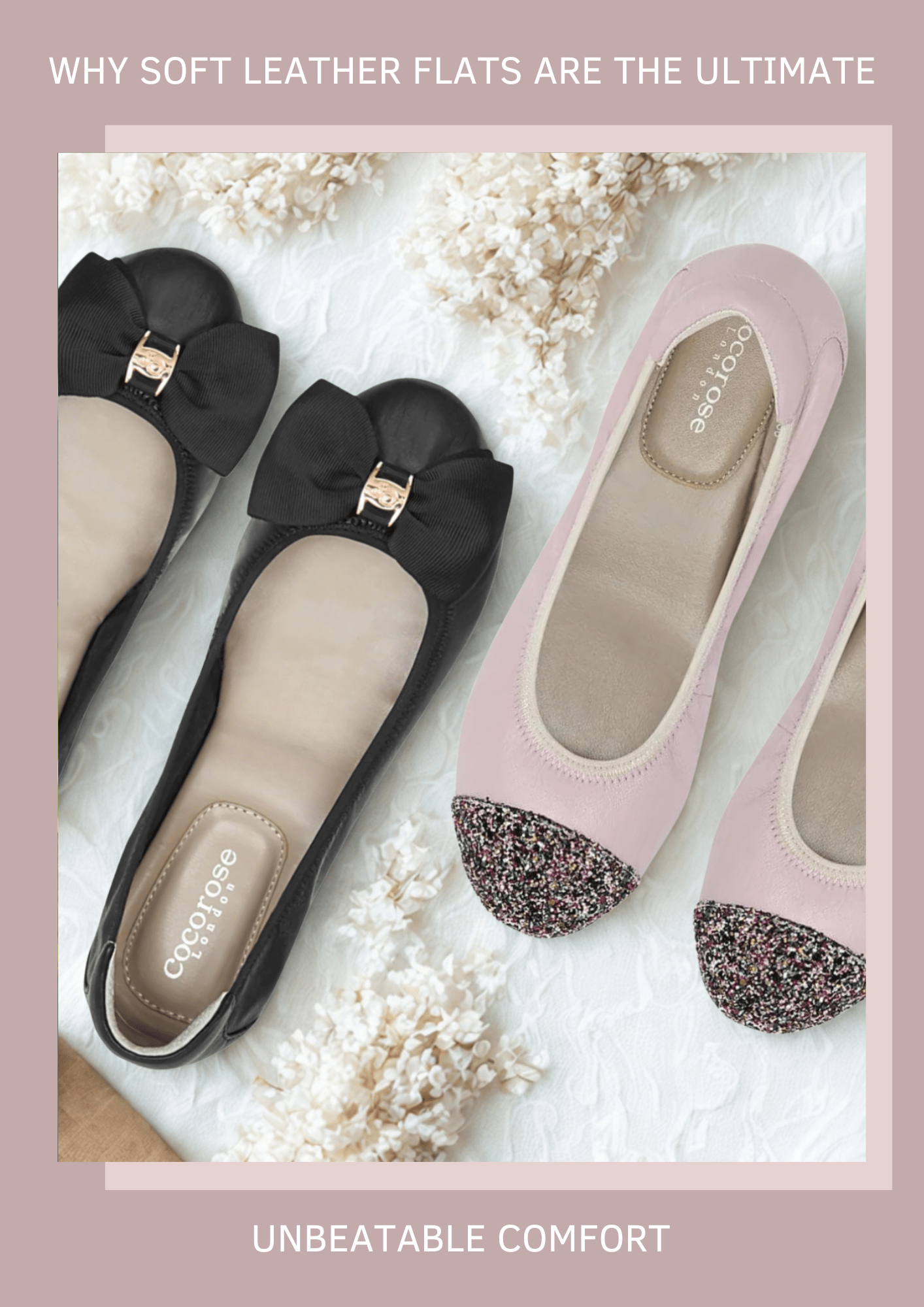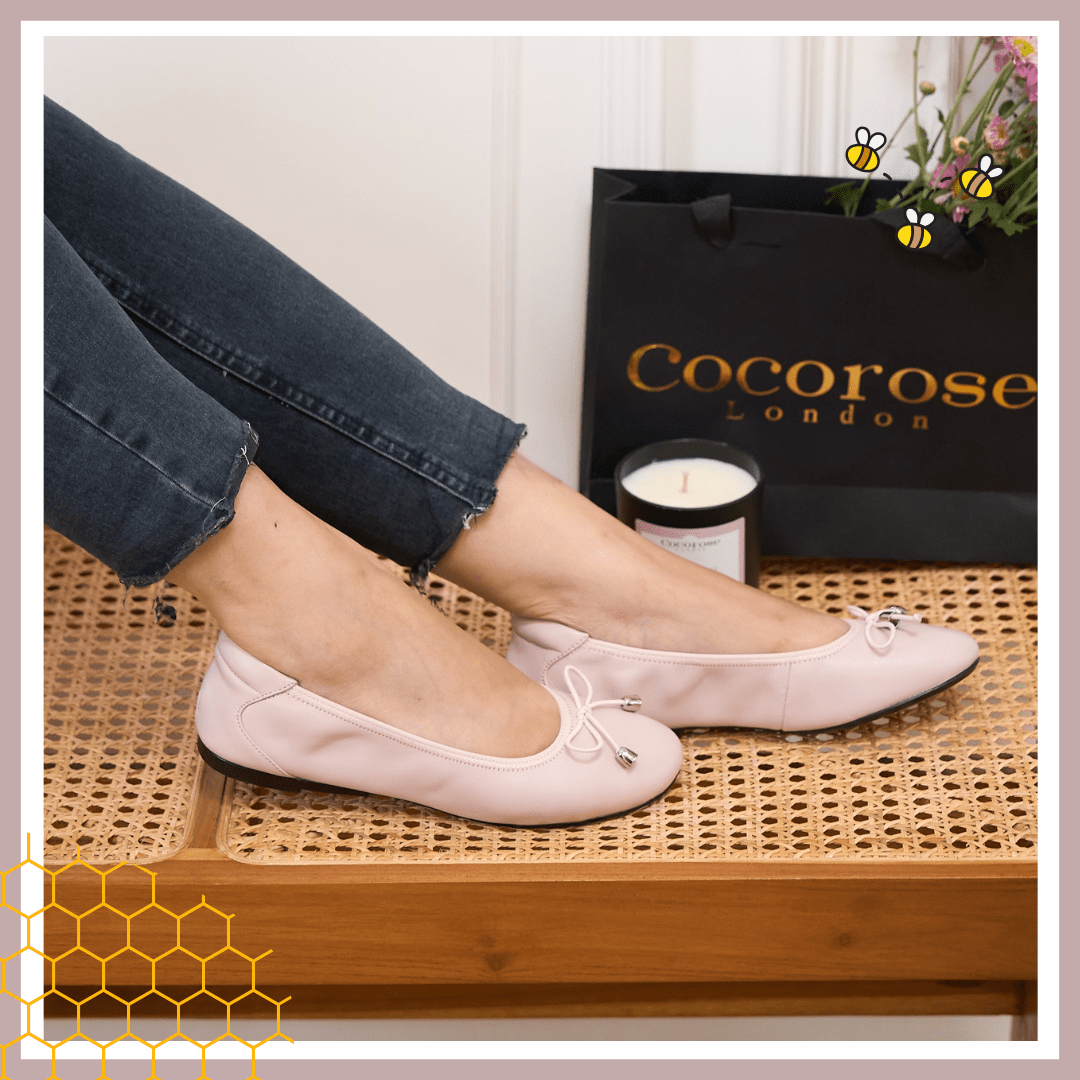Article: How Perimenopause Affects Your Feet And How To Find Comfortable Shoes

How Perimenopause Affects Your Feet And How To Find Comfortable Shoes
Perimenopause is often described as a “hidden transition.” When we talk about perimenopause, most conversations focus on hot flushes, night sweats, mood swings, and disrupted sleep. But what’s less often discussed, yet just as real, are the changes that happen to your feet. From swelling and fiery feet to painful arches and shifting shoe sizes, the impact of fluctuating hormones can be felt with every step.
For many women, this comes as a surprise. But hormonal changes during perimenopause can affect your joints, ligaments, and even the size and shape of your feet. Suddenly, shoes that once fit perfectly may start to pinch. Swelling, bunions, and discomfort become part of the daily reality. And that’s why finding the best shoes for perimenopause — ones that are supportive, stylish, and comfortable — matters more than ever.
In this article, we’ll explore:
• Why perimenopause affects your feet
• The most common perimenopause foot changes
• Practical steps to ease discomfort
• How to choose comfortable shoes for perimenopause that support, rather than hinder, you
Perimenopause is a time of natural change and not surprisingly, the right footwear can be a powerful tool for comfort, health, and confidence. If you’ve noticed your feet changing in perimenopause — widening, swelling, or aching — you’re not alone. These are common, but manageable, changes. Keep reading to see how your shoes can help support you through this stage of life.
Why Hormones Affect Perimenopause and Feet
The hormone most responsible for changes in perimenopausal feet is oestrogen. Primarily associated with females as it is produced by the ovaries, oestrogen is essential for the growth and development of female reproductive organs, regulation of the menstrual cycle and maintenance of bone density. During perimenopause, hormonal shifts, particularly in oestrogen levels, can change how the body holds water and supports connective tissue. As oestrogen levels begin to fluctuate and eventually decline, a ripple effect occurs throughout the body, which can impact the feet:
• Reduced collagen production: Collagen helps keep our skin, tendons, and ligaments supple. With less collagen, the tissues that support your feet can weaken and lose elasticity, leading to fallen arches or wider feet — even if your shoe size has been consistent for years. Joint laxity can also worsen existing bunions or create new ones, leaving feet feeling sore and tender.
• Changes in skin and nails: Another symptom of reduced collagen production is thinner skin and drier nails, resulting in cracked heels, calluses and making friction and rubbing from ill-fitting shoes even more painful. If blisters or sores appear, the feet will also be more prone to infections.
• Loss of Fat Padding: With age and hormonal changes, the natural fat padding that cushions the balls and heels of the feet can diminish, leading to discomfort or pain, especially when walking or standing for long periods.
• Water retention & swelling: Hormonal fluctuations can cause fluid imbalances, leading to water retention, puffiness or swelling in the feet and ankles, which can make shoes feel tighter by the end of the day.
• Bone density changes: As oestrogen declines, women become more susceptible to bone density loss and osteoporosis, which weakens bones, including those in the feet. Over time, this can affect the foot structure and make your feet more susceptible to fractures and broken bones, even from minor injuries.
• Weight gain: A slower metabolism during menopause means that weight gain is common. The extra weight can place additional pressure on the feet, leading to conditions like plantar fasciitis (inflammation of the ligament in the arch of the foot), heel spurs, and overall foot fatigue. The added weight can also worsen existing foot issues, making it harder to stay active.
• Stiffness, Joint and Muscle Pain: Hormonal changes can lead to increased inflammation in the body, contributing to joint and muscle pain, including in the feet and ankles. Conditions like arthritis may develop or worsen, leading to stiff, achy feet, especially in the morning or after long periods of inactivity.
The result? Feet that may look or feel different than they once did — wider, more swollen, more sensitive, or prone to aches and pains. In short: if your shoes don’t feel right anymore, it’s not your imagination.
Common Foot Changes in Perimenopause
Every woman’s journey is unique, but research and podiatry insights highlight some of the most common issues:
-
Widening Feet
As ligaments loosen and arches flatten slightly, many women notice their shoe size increasing — not always in length, but often in width. -
Bunions & Misalignment
Hormonal changes can exacerbate existing bunions or create new discomfort in the big toe joint. Shoes that once fit may now pinch or rub painfully. -
Swelling (Edema)
Particularly in the evenings or after long periods of standing, swollen feet and ankles are a hallmark of perimenopausal changes. -
Heel & Arch Pain
Declining oestrogen can affect fat padding in the heels and feet, leading to conditions like plantar fasciitis or simply sore arches. -
Burning Feet Syndrome
Some women experience a sensation of burning or tingling in the feet, especially at night — often linked to hormonal and nerve changes. -
Varicose Veins and Poor Circulation: Research shows that blood flow to the legs is affected during menopause and women can be prone to cold hands and feet, chilblains and varicose veins.
Why Comfort Becomes Non-Negotiable
It’s tempting to think that uncomfortable shoes are just a minor nuisance, but during perimenopause, they can quickly become more than that. Shoes that pinch or rub don’t just cause blisters; they amplify swelling, worsen bunion pain, and make foot misalignment more pronounced.
The truth is, comfort is not a concession — it’s an act of self-respect. Just as midlife is a time to reassess priorities, it’s also a time to demand more from your shoes.
How to Choose Shoes That Support Perimenopausal Feet
Not all shoes are created equal — and not all “comfortable” shoes live up to their promise. Here’s what to look for if you’re navigating perimenopause:
• Soft, supple leather: High-quality leather moulds to your foot’s shape, reducing pressure points.
• Cushioned insoles: Memory foam or dual-cushion systems absorb shock and support arches
• Flexible soles: Allow your foot to move naturally, preventing fatigue.
• Gentle elastic & minimal seams: Prevent rubbing and digging in at sensitive spots.
• Roomier toe box: Gives swelling or bunions the space they need without sacrificing style.
• Breathable design: Keeps feet cool and dry, especially during hot flushes or night sweats.
The Cocorose Approach
At Cocorose London, we’ve spent nearly two decades listening to women describe these very challenges. Many of our customers tell us that their feet began to change in their forties or fifties, and suddenly, the shoes they once loved no longer loved them back.
That’s why we design ballet flats and trainers with comfort as the starting point, not an afterthought:
• Buttery-soft leather that adapts to your foot
• Double-cushioned insoles that support all-day wear
• Gentle elastic that hugs without digging
• Cushioned Achilles heels to prevent rubbing
For women with wide feet, bunions, or simply a need for softness, these details aren’t luxuries — they’re essentials. And they can make the difference between dreading a day on your feet and moving with ease.
Lifestyle Tips for Happier Feet in Perimenopause
Shoes are only one part of the solution. Here are some everyday practices that can help maintain healthy feet and ease perimenopausal foot discomfort:
• Moisturise regularly to keep skin on your feet soft, supple and hydrated. Using a good quality foot cream that contains urea or lactic acid to soften dry, rough and cracked skin, especially around the heel area.
• Elevate your feet after long days to reduce swelling.
• Stretch daily to keep arches and calves supple and relieve foot pain, particularly for the calves and plantar fascia. Stay active with gentle, low impact exercises like swimming, walking and stretching to help strengthen muscles and improve circulation and flexibility.
• Stay hydrated, as dehydration can worsen water retention.
• Rotate supportive shoes instead of wearing one pair non-stop. Feet change during perimenopause, so look for good support with deep cushioning, soft leathers and a more generous fit to accommodate issues such as bunions.
• See a podiatrist if you are experiencing ongoing foot pain, swelling, or if your bunion or arch pain worsens. A foot specialist will be able to assess your condition and provide advice and treatment.
• Foot soaks and massages will help to relieve tension and reduce swelling. Soak in warm water with Epsom salts and gently massage feet to improve circulation and relieve discomfort.
• Maintain a healthy weight so as not to exert extra pressure on your feet and increase the risks of plantar fasciitis or joint pain. Ensure your diet is rich in calcium and vitamin D to help prevent osteoporosis and maintain bone health.
A Final Step Forward
Perimenopause is a season of transformation, not decline. Yes, it comes with its challenges, including unexpected changes to your feet, but many of these issues can be managed through lifestyle. Staying active, wearing quality footwear and prioritising foot care will significantly alleviate discomfort of perimenopausal feet. Remember, it’s also an opportunity to treat yourself with the care you deserve.
Shoes won’t solve every symptom of perimenopause, but the right pair can transform comfort and restore confidence and a sense of joy to your daily life. At Cocorose, we design shoes for women navigating exactly this stage of life — so every step feels supported.
Whether it’s slipping into soft leather ballet flats for work, or versatile trainers for the weekend, your footwear can become a powerful reminder that you’re still moving forward, one comfortable, stylish step at a time.
Frequently Asked Questions
Q: Why do my feet feel wider in perimenopause?
A: Hormonal changes affect ligaments and arches, often causing feet to spread slightly in width.
Q: Can shoes really help with bunion pain?
A: Yes. Shoes with soft uppers, wider toe boxes, and minimal seams reduce pressure on bunions significantly.
Q: Are ballet flats bad for midlife feet?
A: Not if they’re designed well. Look for brands like Cocorose London that focus on support through cushioned soles, soft leather, and designs that adapt to changing feet.
Q: Should I buy shoes in a bigger size during perimenopause?
A: Not necessarily. Instead, focus on width and flexibility. A half-size up can help, but material and design matter most.
Q: What’s the best everyday shoe for perimenopause?
A: Look for versatile, supportive styles — cushioned ballet flats for work, breathable trainers for weekends — that prioritise comfort without compromising style.



Please leave a comment if you wish
This site is protected by hCaptcha and the hCaptcha Privacy Policy and Terms of Service apply.